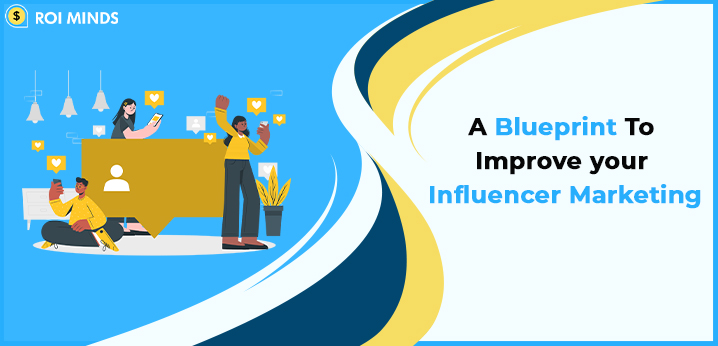What is influencer marketing?
Influencer marketing entails providing free products or services to celebrities and other well-known people in exchange for sending out a tweet. Essentially, they want to get as many people as possible to see their brand. This may appear to be a good thing, but getting your product right the first time is even more important.
These influencers include well-known third parties such as journalists, bloggers, public figures, and industry analysts. For example, when a celebrity is seen visiting a particular store, they provide exposure to the brand and may influence others to become customers. The principles of authority and likeability from Cialdini’s Six Principles of Persuasion form the foundation of influencer marketing.
The current state of the influencer marketing landscape
It was easier to stand out on Instagram in 2014 than today. If you were fortunate enough to be featured on Instagram’s featured page or your style was unique enough, your chances of being hired as an influencer were high. After several brand partnerships, some have turned social media influencer marketing into a full-time career.

Rosie Clayton’s Instagram feed is full of brightly colored dresses and outfits set against brightly colored walls. Rosie’s highly saturated photos stood out when VSCO’s muted tone filters were becoming popular. She collaborates with brands from all over the world to incorporate them into her aesthetic.
But things change, right?
We’re influenced by what we see, and aesthetics are no different. Bright images are more common now and carefully propped up food against interesting backgrounds. What comes next when the ‘typical look’ of influencer marketing no longer becomes unique?
The value of influencer marketing

While Instagram influencer marketing is well-known, many other networks for influencers are growing. According to Adweek, the industry is expected to be worth $10 billion by 2020. Other networks, such as Snapchat, YouTube, and TikTok, each have their own set of influencers with a diverse demographic.
Mediakix, an influencer marketing agency, polled marketers at the end of 2018 to gauge their attitudes toward influencers in the coming year.
According to 89 percent of those polled, the ROI from influencer marketing is comparable to or better than other networks. According to the same survey, 66% of marketers intend to increase their budgets in 2019.
Now that we’ve established where we stand in the industry let’s develop an influencer strategy.
How to create an influencer marketing strategy
Like any marketing tactic, an influencer program takes deliberate targeting and planning. You won’t find strategic success just by sending free things out to everyone who asks or to your existing friends and acquaintances
#1. How to find influencers and what to pay them?
The first step, as with any strategy, is research. Choose the platform on which you want to focus first. You can always branch out to other platforms later, but if you’re just getting started, stick to one. Ideally, your brand should already be present on this network or be looking to expand its presence there.
If you’re not sure where to start, social listening can help you identify where people are talking about your industry and brand—as well as the most influential voices in your industry on each platform.
When planning to implement an influencer marketing strategy, consider your industry as well. On Instagram and YouTube, beauty and fashion brands shine, and twitch is dominated by the video game industry.
Look into the types of influencers you’re interested in during your research phase. Are you targeting celebrities with large fan bases? Or how about micro-influencers with fewer than 2000 followers? Perhaps something in the 5–10k follower range is more your style. Your budget will be determined by what you decide to focus on.
The compensation varies greatly, so be sure to look at typical rates for those influencer types. Micro-influencers are typically narrowly focused on a few topics and willing to accept products. Some micro-influencers operate independently, while an agency or network represents others. Larger accounts and celebrities, on the other hand, will require compensation and may even go through a talent agency.
Consider the expected ROI of your social influencer marketing campaign: how will you measure the contributions of influencer posts to your overall marketing goals? One approach could be to compare your expectations for influencers to those of other firms – for example, consider how you might budget for a video production firm’s work in creating an ad for you versus an influencer creating a video. It may appear that judging the value of influencers is unpredictable, but this approach will provide you with a familiar point of comparison and contrast.
Influence.co published their research findings into Instagram influencer payment in 2017. They investigated the average cost per Instagram post and discovered:
- The overall average price was $271 per post.
- The average price for micro-influencers with fewer than 1,000 followers was $83 per post.
- The average price for influencers with more than 100,000 followers was $763 per post.
Research is key, and you’ll often find yourself returning to this step in the process.
#2. Set a budget and management strategy
Now that you have an idea of how much to pay influencers, you must create a budget. Remember to include planning, executing, and reviewing your influencer program. A successful influencer marketing campaign is not a one-and-done strategy, and it will necessitate careful monitoring and follow-up.
In contrast to a more automated ad strategy, influencers are human. They frequently juggle multiple partnerships, so some may fall behind on their commitments to post on time or make errors in your requested tags or calls to action. You’ll need to take the time to be more hands-on with these relationships to cultivate them, and you’ll need to learn from experience what works and what doesn’t in your niche.
Consider establishing a formal ambassador program if you have the time and resources. Fujifilm uses its ambassadors to promote new products and supplement its content. With a plethora of photographers and videographers at their disposal, the company can diversify its feed to showcase what its equipment is capable of.
Hiring an influencer marketing agency to do the research and coordination is a good bet for brands that need a larger pool of influencers.
#3. Decide on goals and messages.
The two most common reasons for utilizing influencer marketing are to increase brand awareness and sales. Instead of focusing on these broad targets as your first two goals, it will be more effective to begin your strategy by focusing on your brand’s needs. Perhaps you’d like to broaden your customer base to include a younger demographic. Or perhaps you want to introduce a new product to a new user group. Alternatively, you may want to avoid trends and instead use influencers to discuss your brand’s values.
Influencers can reach out to very specific audiences. Instead of relying on thousands of followers, influencers will help you ensure that your content is read and engaged with by a very targeted audience likely to be interested in your product.
Influencer content with a conversational tone and personal narrative helps distinguish these posts from the type of features- or sales-driven posts that a brand might do for the same product on their feed.
Your goal is only as important as your message. You don’t want to stifle an influencer’s creativity or uniqueness, but you also don’t want them to post about something unrelated to your campaign. Determine the structure of your influencer marketing campaign and message so that you can adhere to it.
#4. Influencer outreach: How to contact influencers
Back to the first step: research. With a strategy in place based on your network, goals and the types of influencers you want to work with, we can return to researching how to find the right influencers to work with.
Keep the following in mind as you conduct your research:
- Is the influencer already posting about topics related to your service? For example, if you’re a restaurant looking to promote a new menu, look for influencers who regularly post about dining out and the food they eat.
- Are they genuine? This includes scrolling through their feed and clicking on posts. A low engagement to follower ratio and spam-like comments are indicators of a fraudulent account.
- Have they previously worked with similar brands? A seasoned influencer will be able to show you a press kit that includes a portfolio of their work, depending on the type of influencer you’re looking for. The more you invest in an influencer, the more careful you’ll want to be in vetting them.
You can also use Twitter analytics tools to find potential influencers for your campaigns.
Next, decide how you’ll reach out to them. You could reach out to micro-influencers directly in a private message on the same platform. Click around their profile for more established ones, and they may list contact information for business inquiries in their bio. They may also include a link to a website that indicates brand partnerships.
#5. Review and refine your strategy
Even if your influencer marketing campaign is ongoing, you should still have set dates for measuring its success. The following section of this guide will go over how to track your results. Not all campaigns are successful, but you should learn something new with each one you create.
Conclusion
Influencers are here to stay, but the way influencer marketing looks and operates has changed dramatically in a short period, and the world of influencer marketing in five years may look very different from today. This guide will assist you in developing your strategy, but as with any social strategy, you must be prepared for change.
Nonetheless, while working with influencers has some unique considerations, the process of creating a campaign is similar to that of most marketing campaigns: research, set a budget, determine goals, find your influencers, and review and revise.
Once you’ve established a routine, you may find yourself developing new types of influencer marketing campaigns. Try out our business case template for social team resources if you want to get more resources for your team to run influencer campaigns.





